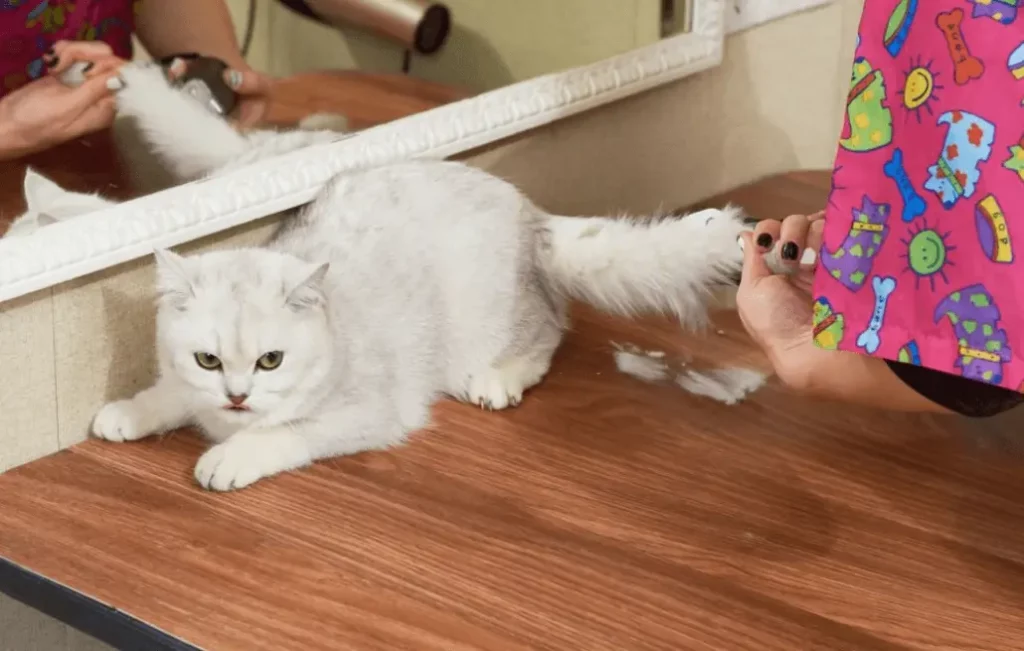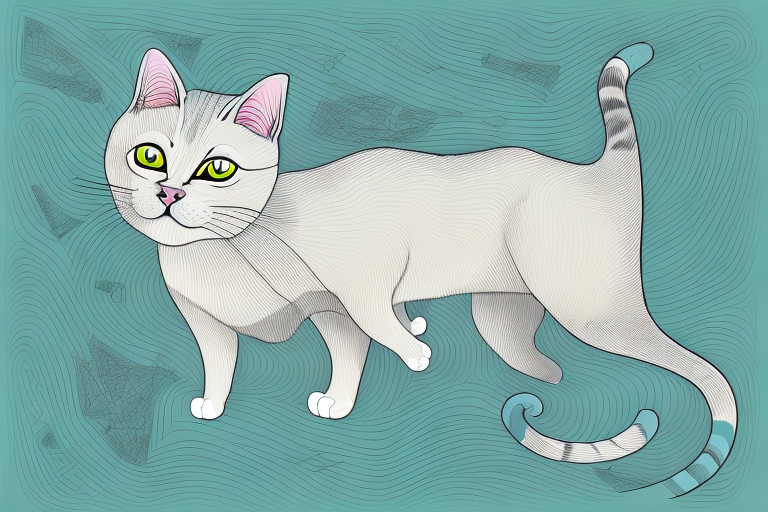The sight of a cat without a tail can be quite startling. It’s a common question among cat owners: why do cats’ tails fall off? The answer, unfortunately, isn’t always straightforward.
While it may seem like a bizarre phenomenon, there’s a range of reasons behind this occurrence, from natural shedding to severe trauma.
This article delves into the complexities of why a cat might lose its tail, exploring the underlying causes, and providing helpful tips on prevention and treatment.
Reasons for Cats’ Tails Falling Off
:strip_icc()/tail-of-cat--close-up-sb10070136c-001-59088e3a3df78c928316e18b.jpg)
Cats’ tails are an integral part of their anatomy, providing balance, communication, and even tactile sensation. Their loss can be a result of a variety of factors, each leading to a distinct outcome for the cat.
Trauma
Trauma is a significant contributing factor to tail loss in cats. Accidents, fights with other animals, or forceful impacts can lead to severe injuries, including tail fractures, dislocations, or severe crush injuries. The extent of the injury determines the severity of the situation. Some injuries may not require tail amputation, while others may necessitate immediate removal to prevent further complications.
| Type of Trauma | Potential Outcome |
|---|---|
| Tail Fracture | Depending on the severity, the tail may need to be amputated to prevent further complications. |
| Tail Dislocation | The tail may be able to be reset, but if the injury is severe, amputation may be necessary. |
| Crush Injury | Severe crush injuries can cause extensive tissue damage, leading to the need for tail amputation. |
Infections
Infections, particularly in deep wounds, can lead to tissue damage and necrosis, ultimately necessitating the removal of the tail. These infections can stem from bites, scratches, or even invasive procedures. Without prompt treatment, the infection can spread, causing further complications and potentially leading to the need for tail amputation.
- Bacterial Infections: These can occur following injuries or surgical procedures and may require antibiotics or even tail amputation.
- Fungal Infections: Less common, but can also lead to tissue necrosis and the need for tail removal.
- Abscesses: Pockets of pus that can form in the tail, often requiring surgical drainage or amputation.
Certain foods can be toxic to cats and lead to severe health issues, including infections that might necessitate tail amputation. Onions, for example, can cause serious health problems in cats. To learn more about the dangers of onions and other toxic foods, read our article on Can Cats Eat Onions?.
Frostbite
In cold climates, cats’ tails can be susceptible to frostbite, particularly if they spend a lot of time outdoors. Frostbite can cause tissue damage and necrosis, leading to the need for tail amputation to prevent the spread of infection and further complications.
Congenital Abnormalities
Some cats are born with congenital abnormalities that affect the development of their tails. These can include kinks, bends, or even a complete lack of a tail (known as a “bobtail”). In some cases, these abnormalities may require surgical intervention to remove the affected portion of the tail.
Degloving Injuries
Degloving injuries occur when the skin and underlying tissues are completely stripped away from the tail, often due to entanglement or severe trauma. This can lead to extensive tissue damage and the need for tail amputation to prevent further complications.
Immediate and appropriate first aid can significantly influence the recovery process after a traumatic injury to a cat’s tail. Knowing how to handle such situations can prevent further complications. For detailed guidance on administering first aid to injured cats, visit our article on First Aid for Cat Injuries.
Tail Paralysis
Certain neurological conditions or injuries can cause paralysis of the tail, leading to a lack of blood flow and eventual tissue necrosis. In these cases, tail amputation may be necessary to prevent the spread of infection and further complications.
Behavioral Triggers for Cats’ Tails Falling Off

While the physical causes of tail loss are well-documented, there are also behavioural factors that can contribute to a cat’s tail falling off.
Excessive Grooming
Some cats may develop an obsessive grooming habit, particularly in response to stress or anxiety. This excessive grooming can lead to the cat licking and chewing at its tail, causing damage and potentially leading to the need for amputation.
Stress-related behaviours like excessive grooming and tail-chasing can sometimes be mitigated by addressing dietary issues. Cats with sensitive stomachs might benefit from a tailored diet, reducing stress and related behaviours. Discover how to prepare suitable meals in our guide on Homemade Cat Food for Sensitive Stomachs.
Tail Chasing
Cats may also engage in tail-chasing behaviour, where they attempt to catch and bite their own tails. This can result in self-inflicted injuries and the eventual loss of the tail.
Inappropriate Scratching
Cats have a natural instinct to scratch, and they may use their tails as a scratching surface. This can lead to damage and, in severe cases, the need for tail amputation.
Common Causes of Cats’ Tails Falling Off

While the specific causes of tail loss in cats can vary, there are several common scenarios that often lead to this outcome.
Cat Fights and Injuries
Conflicts with other cats, either in the home or outdoors, can result in severe injuries to the tail. This can include bites, scratches, and other trauma that can cause tissue damage and necrosis, ultimately leading to the need for amputation.
Accidents and Entanglements
Cats are curious and adventurous animals, and they may get themselves into precarious situations that can result in tail injuries. This can include getting their tails caught in doors, windows, or other household objects, or even becoming entangled in objects like strings or cords.
Surgical Complications
In some cases, cats may require surgical procedures that involve the tail, such as the removal of tumours or the treatment of injuries. If complications arise during or after these procedures, it may be necessary to amputate the tail to prevent further complications.
Neglect and Abuse
Sadly, some cats may experience neglect or abuse, which can lead to severe injuries, including damage to the tail. In these cases, the tail may need to be amputated to prevent further suffering and the spread of infection.
Understanding Why Cats’ Tails Fall Off

Cats’ tails are a complex and integral part of their anatomy, and their loss can have significant impacts on a cat’s overall health and well-being. Understanding the underlying causes of tail loss is crucial for both cat owners and veterinary professionals.
The Importance of Cats’ Tails
Cats’ tails serve several important functions, including:
- Balance and Coordination: The tail helps cats maintain balance and coordination, particularly during activities like jumping and climbing.
- Communication: Cats use their tails to convey a wide range of emotions and social cues, such as fear, aggression, or friendliness.
- Tactile Sensation: The tail has a high concentration of nerve endings, allowing cats to sense their surroundings and environmental changes.
The loss of a cat’s tail can have a significant impact on these important functions, potentially affecting the cat’s overall quality of life.
The Tail Amputation Process
In cases where a cat’s tail must be amputated, the veterinary team will carefully assess the extent of the injury or damage and determine the appropriate course of action. The surgical procedure, known as a tail amputation or caudectomy, involves removing the affected portion of the tail to prevent further complications and ensure the cat’s overall health and well-being.
The amputation process typically involves the following steps:
- Anaesthesia: The cat is placed under general anaesthesia to ensure comfort and safety during the procedure.
- Incision: The veterinarian makes an incision to expose the affected area of the tail.
- Bone Removal: If necessary, the veterinarian may remove a portion of the tail bone to ensure complete removal of the damaged tissue.
- Closure: The incision is closed using sutures or surgical staples to promote proper healing.
After the procedure, the cat will be closely monitored for any signs of complications, such as infection or excessive bleeding. Pain management and proper wound care are crucial during the recovery process.
Can Cats’ Tails Grow Back After Falling Off?

The short answer is no – a cat’s tail cannot regrow once it has been amputated or lost due to severe trauma or injury. The tail is a part of the cat’s vertebral column, and once it has been removed, the body is unable to regenerate the missing bone and tissue.
However, there are some exceptions to this rule:
Natural Shedding of Cats’ Tails
In some cases, cats may naturally shed a portion of their tail, particularly if it has been damaged or infected. This process, known as autotomy, is a defence mechanism that allows the cat to detach its tail and escape from predators or dangerous situations. The remaining stump will then heal and form a natural scar, but the tail will not regrow.
Partial Tail Loss
In instances where only a small portion of the tail has been lost, the remaining stump may be able to heal and retain some of its function. However, the tail will not regrow to its original length or appearance.
It’s important to note that while a cat’s tail cannot regrow once it has been lost, the cat can often adapt and maintain a good quality of life without its tail. With proper care and attention from their owners, cats can thrive even with a shortened or absent tail.
Signs That Indicate a Cat’s Tail May Fall Off
Recognizing the early signs that a cat’s tail may be at risk of falling off can help owners take proactive measures to prevent or address the issue. Some common signs to look out for include:
- Swelling or inflammation at the base of the tail
- Discoloration or a change in the appearance of the tail
- Excessive licking, chewing, or grooming of the tail
- Visible wounds, cuts, or trauma to the tail
- Behavioural changes, such as reluctance to move the tail or sensitivity to touch
If you notice any of these signs in your cat, it’s important to consult with a veterinarian as soon as possible to determine the underlying cause and receive appropriate treatment.
Preventing Cats’ Tails from Falling Off
While some causes of tail loss, such as congenital abnormalities or accidents, may be unavoidable, there are steps cat owners can take to minimize the risk of their cat’s tail falling off:
Ensuring that your cat receives proper nutrition is vital for its overall well-being, which includes maintaining the health of its tail. A balanced diet strengthens the immune system, reducing the risk of infections that could lead to tail loss. For more information on providing the best diet for your cat, read our Complete Guide to Cat Nutrition.
Provide a Safe Environment
- Ensure your home is free from potential hazards that could harm your cat’s tail, such as closing doors and windows, securing cords and strings, and keeping your cat’s environment clean and tidy.
- Consider providing your cat with appropriate scratching surfaces to discourage inappropriate scratching of the tail.
- Supervise your cat’s outdoor access and keep them indoors or in a secure, enclosed area to prevent fights with other animals.
Maintain Good Hygiene
- Regularly groom your cat to identify any signs of infection or injury to the tail.
- Promptly clean and treat any wounds or injuries to prevent the development of infections.
- Consult with your veterinarian about appropriate grooming techniques and products to keep your cat’s tail healthy.
Encourage Calm Behavior
- Provide your cat with ample opportunities for physical and mental stimulation to reduce stress and anxiety, which can lead to excessive grooming or tail-chasing behaviours.
- Consider using calming pheromones or other behaviour modification techniques to help your cat stay relaxed and avoid harmful behaviours.
Seek Veterinary Care
- If you notice any changes or concerns with your cat’s tail, don’t hesitate to consult with a veterinarian. Early intervention can often prevent the need for more invasive treatments, such as tail amputation.
- Work closely with your veterinarian to develop a comprehensive plan for maintaining your cat’s overall health and preventing tail-related issues.
By taking proactive steps to create a safe environment, maintain good hygiene, and address any behavioural concerns, cat owners can significantly reduce the risk of their cat’s tail falling off.
Treatment Options for Cats with Falling Tails
When a cat’s tail is at risk of falling off or has already been affected, there are several treatment options available to address the underlying issue and ensure the cat’s overall health and well-being.
Wound Care and Antibiotics
For minor injuries or infections, the veterinarian may prescribe topical treatments, such as antibacterial ointments or antiseptic solutions, to promote healing and prevent further complications. In some cases, oral antibiotics may also be necessary to clear up any infections.
Tail Amputation
In more severe cases, where the tail has been severely damaged or is at risk of further complications, the veterinarian may recommend a tail amputation procedure. This surgery involves removing the affected portion of the tail to prevent the spread of infection and ensure the cat’s overall health.
Pain Management
Cats may experience significant pain and discomfort associated with tail injuries or the amputation process. Veterinarians will typically prescribe pain medication, such as non-steroidal anti-inflammatory drugs (NSAIDs) or opioid analgesics, to help manage the cat’s pain during the recovery period.
Rehabilitation and Supportive Care
Depending on the nature and extent of the injury, the veterinarian may also recommend physical therapy or other supportive care measures to help the cat regain strength and mobility after the loss of its tail. This may include exercises, massage, or the use of assistive devices, such as slings or harnesses.
Monitoring and Follow-up Care
Regardless of the treatment approach, it’s essential for cat owners to closely monitor their pet’s progress and follow the veterinarian’s recommendations for post-operative care and follow-up visits. This helps ensure that the cat’s recovery is progressing as expected and that any potential complications are addressed promptly.
When to Seek Veterinary Help for a Cat’s Tail Falling Off
If you notice any signs that your cat’s tail may be at risk of falling off, it’s crucial to seek veterinary care as soon as possible. Some key indicators that it’s time to visit the vet include:
- Visible injuries or trauma to the tail, such as cuts, scratches, or swelling
- Signs of infection, including redness, discharge, or a foul odour
- Behavioural changes, such as excessive licking, chewing, or sensitivity to touch
- Difficulty using or moving the tail
Regular veterinary checkups are crucial for early detection and management of health problems that could lead to tail loss. Routine visits allow for timely intervention, reducing the risk of serious complications. For more on the importance of regular vet visits, read our article on Why Regular Vet Checkups Are Essential for Your Cat’s Health.
Prompt veterinary intervention is essential to prevent the situation from worsening and to identify the underlying cause of the problem. Your veterinarian will perform a thorough examination, assess the extent of the damage, and develop a treatment plan to address the issue and ensure your cat’s overall health and well-being.
Video
Conclusion
The loss of a cat’s tail can be a concerning and sometimes distressing experience for both the cat and its owner. However, understanding the various reasons behind this occurrence, from trauma and infections to behavioural triggers, can help cat owners take proactive steps to prevent or address the issue.
By recognizing the early signs of potential tail loss, creating a safe environment, maintaining good hygiene, and seeking timely veterinary care, cat owners can significantly reduce the risk of their feline friend losing their tail. And while a cat’s tail cannot regrow once it has been lost, with the right treatment and support, cats can often adapt and thrive even without their signature appendage.
Ultimately, the health and well-being of the cat should be the top priority. By staying informed, vigilant, and working closely with their veterinarian, cat owners can help ensure their furry companions live happy, comfortable lives, even in the face of unexpected tail-related challenges.

Saira is the lead writer behind Cat Care Guide, a blog focused on providing cat owners with authoritative advice on feline health, nutrition, behavior, and more. As a zoologist specializing in microbiology and a dedicated cat owner for over 10 years, Saira combines her formal education, extensive research, and firsthand experience caring for cats into deeply researched blog content you can trust.
When she’s not working on new articles for Cat Care Guide, you can find Saira continuing to self-educate on the latest cat health developments, doting on her own cats at home, or volunteering at the local animal shelter. With a true passion for cat care and welfare, Saira’s mission is to help fellow cat lovers nurture happy, healthy lives for their feline companions.
Please feel free to reach out to Saira with any questions about caring for your cat! If needed, contact via the website contact form.
